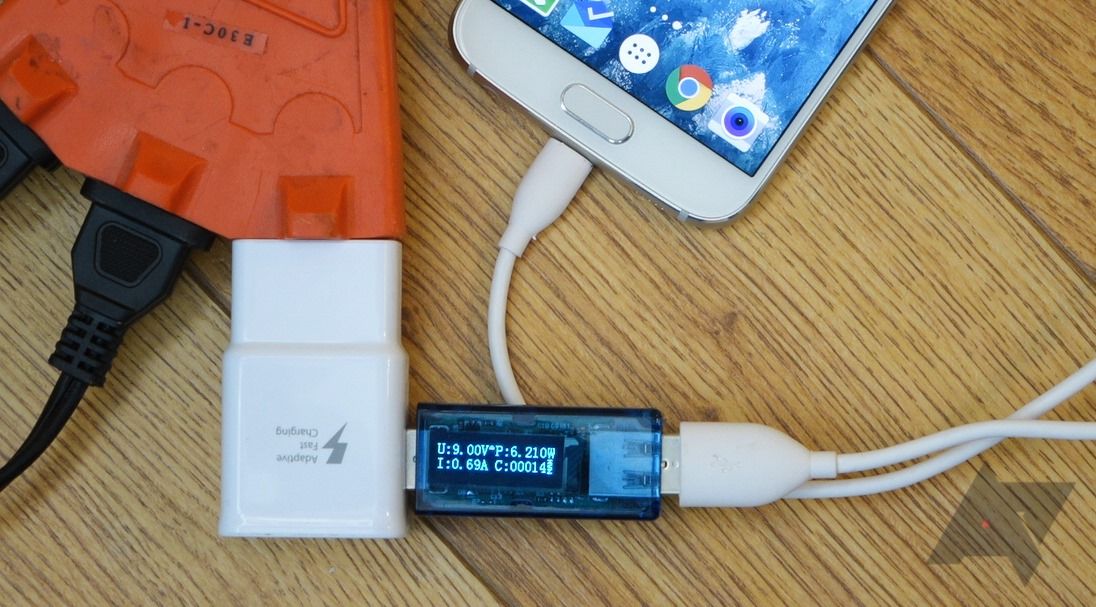If there's one thing I think we can all agree on, it's that when our phones are low on juice, we're willing to jump through a hoop or two to power back up. Be it an awkwardly placed public wall outlet, regularly carrying around external chargers, or buying a phone with a user-replaceable battery so that swapping in a spare is quick and easy.
We also all know somewhat instinctively that using our phones while they're on a charger will decrease the rate at which they charge - that's just common sense. Even if the phone is charging, using the device obviously consumes power, and that cancels out some of the net effect charging has. But if you thought that was the whole story, especially in this age of quick and rapid charging, you'd be wrong.
We've now tested multiple devices that show the behavior in the above video. That is, if the display of the device is powered on while the phone charges (especially if the phone is somewhat warm), the amount of power the phone will accept from a connected charger can drop by a huge margin, in this case a decrease of well over 60% versus when the display is turned off. So not only is using the phone while it charges consuming more power, it's also causing it to generate less!
In the video, we can see a Galaxy S6 is drawing between 5-7 watts from the stock Samsung Adaptive Fast charger while its display is turned on. When the screen goes off, though, power shoots up to 13-14.5W (rough range) - greatly increasing the rate at which the phone charges. In both situations, the phone acknowledges that a fast charger is connected and displays the same charge ETA, which definitely seems a bit misleading when the display is on. Clearly, if you keep using the phone while it's on the charger, it's charging at nowhere near the rated fast charging spec. Only when the display is turned off does the charge flow freely and fully.
Heat seems to be the primary reason here. While charging, a phone gets pretty warm. If you're using it, there's probably a real concern that heat from the LCD, chipset, and antennas could cause the battery to reach a temperature where it could become damaged, or suffer from severely reduced cycle lifetime.
As to phones that exhibit this behavior? It's pretty much all of them, though it varies in terms of frequency and sensitivity. For example, the Nexus 6 only really started throttling charge speeds when I'd really push it while on the charger - running navigation at full screen brightness and loading a few web pages, for example. Even then, the power being drawn only dropped 20-40%, significantly less than the 50-60%+ the Galaxy S6 was experiencing. Additionally, phones with lower peak charge power (such as those limited to 5W, the old 1A @ 5v speed) are much less likely to throttle, though obviously they charge quite slowly to begin with. At no point in my testing was I able to get a phone to stop charging entirely, and the lowest speed I observed on a heat-soaked device was 2-3W on an HTC One M9. Granted, that's probably barely enough to keep the phone's battery sustained at that point.
The lesson? If you want your phone to charge as quickly as possible, don't use it while it's on the charger. Not only are you using more power, there's a good chance you're causing the phone to charge a lot slower than it would if you just let it sit there with the screen (or better yet, the whole device) powered off.
As to the accuracy of the dongle we used to monitor the output, we're pretty confident: tools like this measure power before it goes through the dongle "interface," so the amount of current and voltage shown is before any power is lost to the dongle itself (and even if there is, the amount leeched is almost certainly quite tiny).
And yes, you can buy one of these nifty Drok USB power monitors - they're on Amazon right here. They read up to 13 volts and 3 amps, which means even the fastest Quick Charge 2.0 device is compatible. We'll talk more about these awesome little tools and what you can use them for in a series of upcoming posts, so stay tuned.

